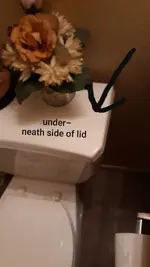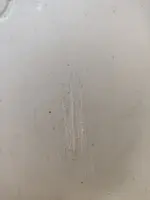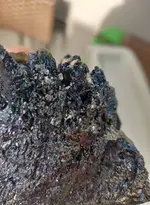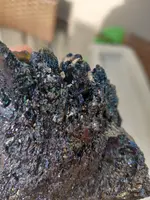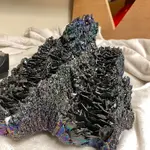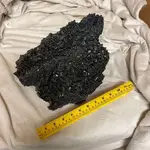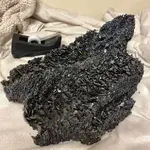You are using an out of date browser. It may not display this or other websites correctly.
You should upgrade or use an alternative browser.
You should upgrade or use an alternative browser.
What is this Beauty?
- Thread starter RockRock
- Start date
RockRock
Tenderfoot
- Joined
- Apr 10, 2020
- Messages
- 7
- Reaction score
- 6
- Golden Thread
- 0
- Primary Interest:
- All Treasure Hunting
- #3
Thread Owner
Hey, Thanks for the reply. It's weight is 515g and its dimensions are approximately 7.6cm x 8cm x 6.5cm. It was found underwater, more specifically under same sand. As a location it was found in Malta.
Upvote
0
DDancer
Bronze Member
- Joined
- Mar 25, 2014
- Messages
- 2,339
- Reaction score
- 2,003
- Golden Thread
- 0
- Location
- Traveling US to work
- Detector(s) used
- Current Equinox 600
Past Whites DFX Garret GTI 2500 and others
Prospecting Minelab GPZ 7000
Past SD 2100 GP 3000 (retired)
- Primary Interest:
- All Treasure Hunting
It looks like a crystallization of Hematite. Try a streak test. Handsome specimen.
Upvote
0
faribo
Full Member
- Joined
- Apr 13, 2007
- Messages
- 155
- Reaction score
- 293
- Golden Thread
- 0
- Location
- Southern MN
- Detector(s) used
- Nox 800
AT Pro (when desperate)
It looks like a crystallization of Hematite. Try a streak test. Handsome specimen.
Agreed
Upvote
0
RockRock
Tenderfoot
- Joined
- Apr 10, 2020
- Messages
- 7
- Reaction score
- 6
- Golden Thread
- 0
- Primary Interest:
- All Treasure Hunting
- #10
Thread Owner
Hey Steve1236, I tried to scratch the stone as you told me but its not marking anything. It is only scratching the porcelain. Would it effect the process if the stone is a little wet? Thank you in advance.
Upvote
0
RockRock
Tenderfoot
- Joined
- Apr 10, 2020
- Messages
- 7
- Reaction score
- 6
- Golden Thread
- 0
- Primary Interest:
- All Treasure Hunting
- #12
Thread Owner
Thank you for replying. Yes I did I attached a photo of the scratches I tried to make. I also attached another photo of the specimen with better lighting to show the colors it is reflecting. Thanks in advance.
Attachments
Last edited:
Upvote
0
RockRock
Tenderfoot
- Joined
- Apr 10, 2020
- Messages
- 7
- Reaction score
- 6
- Golden Thread
- 0
- Primary Interest:
- All Treasure Hunting
- #14
Thread Owner
Thanks Steve, I made some research about carborundum and from the images I saw they seem quite similar. I read that carborundum is very rare to find in nature. Is there a way to test if this is a natural one or a synthetic made one? Thanks in Advance for your time and suggestions. 

Upvote
0
- Joined
- Nov 14, 2010
- Messages
- 4,958
- Reaction score
- 14,522
- Golden Thread
- 0
- Location
- The Great Southwest
- Primary Interest:
- Prospecting
It looks like clinkers from a steam engine. Not unusual to find those near major shipping routes. The steam powered ships left trails of them along their routes.
Upvote
0
BridgetownTreasures
Jr. Member
- Joined
- Jan 27, 2020
- Messages
- 93
- Reaction score
- 162
- Golden Thread
- 0
- Location
- Portland, OR
- Primary Interest:
- Other
Upvote
0
- Joined
- Nov 14, 2010
- Messages
- 4,958
- Reaction score
- 14,522
- Golden Thread
- 0
- Location
- The Great Southwest
- Primary Interest:
- Prospecting
Looks like carborundum to me. I had an uncle that worked for a company that produced it. I’ve got this 17-pound piece sitting in my garage.
I looked closer at the first photo and I think you are right. No clinker ever crystallized in that distinct form.
It's man made. Now the question is who would leave carborundum in sand underwater in Malta?
Upvote
0
Similar threads
- Replies
- 12
- Views
- 438
- Replies
- 3
- Views
- 266
- Replies
- 7
- Views
- 323
Users who are viewing this thread
Total: 1 (members: 0, guests: 1)



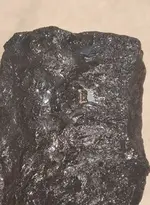
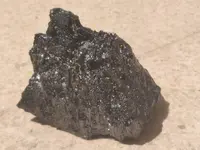
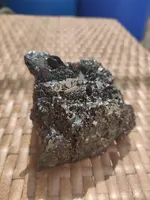
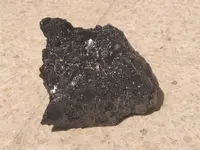
 .
. . I am quite a beginner when it comes to geology.
. I am quite a beginner when it comes to geology.